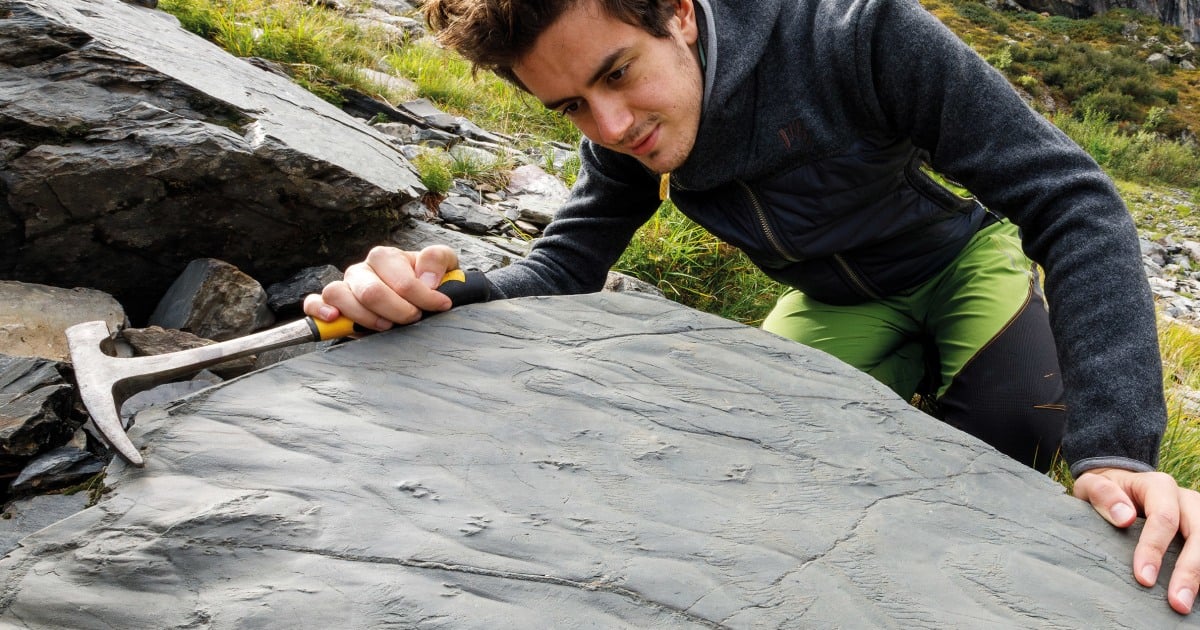Summary
Melting snow in the Italian Alps revealed a prehistoric ecosystem from the Permian period, predating dinosaurs by 280 million years.
The discovery, made by hiker Claudia Steffensen in 2023, includes well-preserved footprints of reptiles and amphibians, alongside traces of flora and invertebrates.
Paleontologists describe the find as unprecedented in quality and variety. The fossils, uncovered due to rising temperatures linked to climate change, highlight parallels between ancient environmental shifts and today’s climate crisis.
Researchers expect more discoveries as melting ice and erosion expose additional fossils.



Even now and then it just catches me how absolutely insane it is how long the planet sustained complex life without any humans whatsoever. We’re an evolutionary accident. A footnote consequence of unlikely circumstance. Were it not for a number of unlikely destructive events this planet might have quite happily continued ad infinitum with only dinosaurs on it. Can you imagine that, if this whole universe had happened and this one random blue marble had dinosaurs on it and not a single minded being anywhere to appreciate the magnificent insanity of it all?
I believe there’s some thinking now that dinosaurs weren’t doing all that well, stagnating, so without a meteor and volcanic activity they still would have changed in some manner eventually. But perhaps not enough to let the mammals fill any niches.
What gets me is how long life was on Earth just as single cell forms, and then suddenly, recently, it took off to bigger things.
The step from single to multicellular life forms is a metasystem transition, and those don’t roll back, and are amplified by branching growth at the penultimate level1.
Or, more concretely: A strain of cells learns to communicate with each other, to coordinate, giving all a fitness advantage in other words they create a control system to regulate the lot of them and apes together stronger than apes apart. The emergence of that (usually distributed) control system is a metasystem transition. Because that kind of cooperation has advantage over not cooperating like that, evolution never goes into the other direction (in that sense it has a direction, similar to how time doesn’t really exist in physical microstates, only in their relationship to macrostates: It’s not like genes can’t drift in the other direction, it’s that if they do they get culled at a much higher rate).
And because our critters now have an advantage, they have more resources to develop, to multiply both in absolute number, as well as to specialise into different functions. That’s the branching growth at the penultimate (that is, below the control system) level, and it makes them even more fit. Branching growth is one of those cybernetic laws that happen again and again and again and again and you’d think “surely this can’t always be the case” and yes you’ll find exceptions but by and large, yes, once there’s a metasystem transition you get that effect, again, because it’s very regularly beneficial to the whole.
If that got you consider the evolutionary step from soup of chemicals over the first feedback systems made out of simple molecules creating environments benefitting their own replication to actual cells. Which is explainable by chance alone, but once you take metasystem transitions into account suddenly it doesn’t take an eternity, any more, only aeons.
1 I should, possibly, at this point warn about Principia Cybernetica just as people warn about tvtropes. It’s a rabbit hole.
At the time of the K-T extinction, we looked like this:
https://en.wikipedia.org/wiki/Purgatorius
Luckily, great-grandaddy squirrel-critter was a survivor and had a taste for insects:
Some birds are pretty intelligent.
Yeah but on the other hand, big numbers on a screen.